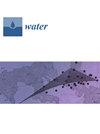Land-Use Pattern-Based Spatial Variation of Physicochemical Parameters and Efficacy of Safe Drinking Water Supply along the Mahaweli River, Sri Lanka
IF 3
3区 环境科学与生态学
Q2 ENVIRONMENTAL SCIENCES
引用次数: 0
Abstract
Exploration of the pollution status of river-based water sources is important to ensure quality and safe drinking water supply for the public. The present study investigated physicochemical parameters of surface water in the upper segment of River Mahaweli, which provides drinking water to the Nuwara Eliya and Kandy districts of Sri Lanka. River surface water from 15 intakes and treated water from 14 Water Treatment Plants (WTPs) were tested for pH, water temperature, turbidity, EC, COD, 6 anions, 21 cations, 3 pesticides, and 30 antibiotics once every 3 months from June 2022 to July 2023. Except for turbidity and iron concentrations, all other parameters were within the permissible range as per the Sri Lanka Standard Specification for Potable Water (SLS 614:2013). The uppermost Kotagala WTP raw water had a high concentration of iron due to runoff from areas with abundant iron-bearing minerals. Turbidity increased as the river flowed downstream, reaching its highest value of 13.43 NTU at the lowermost Haragama. Four intakes had raw surface water suitable for drinking as per the Water Quality Index (WQI). Pollution increased gradually towards downstream mainly due to agricultural runoff, industrial effluents, and urbanization. Poor water quality at the upstream Thalawakale-Nanuoya intake was due to highly contaminated effluent water coming from Lake Gregory in Nuwara Eliya. Cluster analysis categorized WTP locations in the river segment into 3 clusters as low, moderate, and high based on contaminations. Principal component analysis revealed that the significance of the 41.56% variance of the raw water was due to the pH and the presence of heavy metals V, Cr, Ni, Rb, Co, Sr, and As. All treated water from 15 WTPs had very good to excellent quality. In general, heavy metal contamination was low as indicated by the heavy metal pollution index (HPI) and heavy metal evaluation index (HEI). The treatment process could remove up to 94.7% of the turbidity. This is the first attempt to cluster the river catchment of the Mahaweli River based on physicochemical parameters of river water. We present here the land-use pattern-based pollution of the river and efficacy of the water treatment process using the Mahaweli River Basin as a case study. Regular monitoring and treatment adjustments at identified points are recommended to maintain the delivery of safe drinking water.斯里兰卡马哈韦利河沿岸基于土地利用模式的理化参数空间变化和安全饮用水供应的有效性
探索河流水源的污染状况对于确保向公众提供优质安全的饮用水非常重要。本研究调查了为斯里兰卡努瓦拉埃利亚和康提地区提供饮用水的马哈威里河上游地表水的理化参数。从 2022 年 6 月至 2023 年 7 月,每 3 个月对 15 个取水口的地表水和 14 个水处理厂(WTPs)的处理水进行一次 pH 值、水温、浊度、EC、COD、6 种阴离子、21 种阳离子、3 种杀虫剂和 30 种抗生素的检测。除浑浊度和铁浓度外,所有其他参数均在《斯里兰卡饮用水标准规范》(SLS 614:2013)的允许范围内。最上游的 Kotagala 自来水厂原水铁含量较高,这是由于来自含铁矿物质丰富地区的径流造成的。浊度随着河水向下游流动而增加,在最下游的哈拉加马达到 13.43 NTU 的最高值。根据水质指数(WQI),四个取水口的地表原水适合饮用。污染向下游逐渐加剧,主要是由于农业径流、工业废水和城市化造成的。上游 Thalawakale-Nanuoya 取水口水质较差的原因是来自努瓦拉埃利亚格雷戈里湖的污水受到严重污染。聚类分析根据污染程度将河段中的水污染点分为低、中、高 3 个聚类。主成分分析表明,原水 41.56% 的差异主要是由于 pH 值和重金属 V、Cr、Ni、Rb、Co、Sr 和 As 的存在。15 个污水处理厂的所有处理水水质都非常好或极好。从重金属污染指数(HPI)和重金属评价指数(HEI)来看,重金属污染程度普遍较低。处理过程可去除高达 94.7% 的浊度。这是首次尝试根据河水的理化参数对马哈威里河流域进行分类。在此,我们以马哈威里河流域为例,介绍了基于土地利用模式的河流污染情况以及水处理工艺的功效。我们建议在确定的地点进行定期监测和处理调整,以保持安全饮用水的供应。
本文章由计算机程序翻译,如有差异,请以英文原文为准。
求助全文
约1分钟内获得全文
求助全文
来源期刊

Water
WATER RESOURCES-
CiteScore
5.80
自引率
14.70%
发文量
3491
审稿时长
19.85 days
期刊介绍:
Water (ISSN 2073-4441) is an international and cross-disciplinary scholarly journal covering all aspects of water including water science and technology, and the hydrology, ecology and management of water resources. It publishes regular research papers, critical reviews and short communications, and there is no restriction on the length of the papers. Our aim is to encourage scientists to publish their experimental and theoretical research in as much detail as possible. Full experimental and/or methodical details must be provided for research articles. Computed data or files regarding the full details of the experimental procedure, if unable to be published in a normal way, can be deposited as supplementary material.
 求助内容:
求助内容: 应助结果提醒方式:
应助结果提醒方式:


